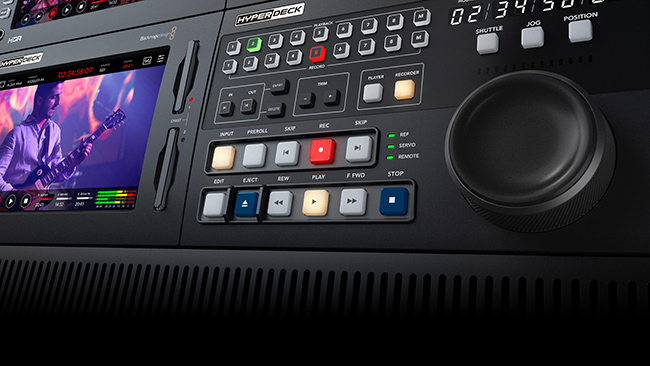
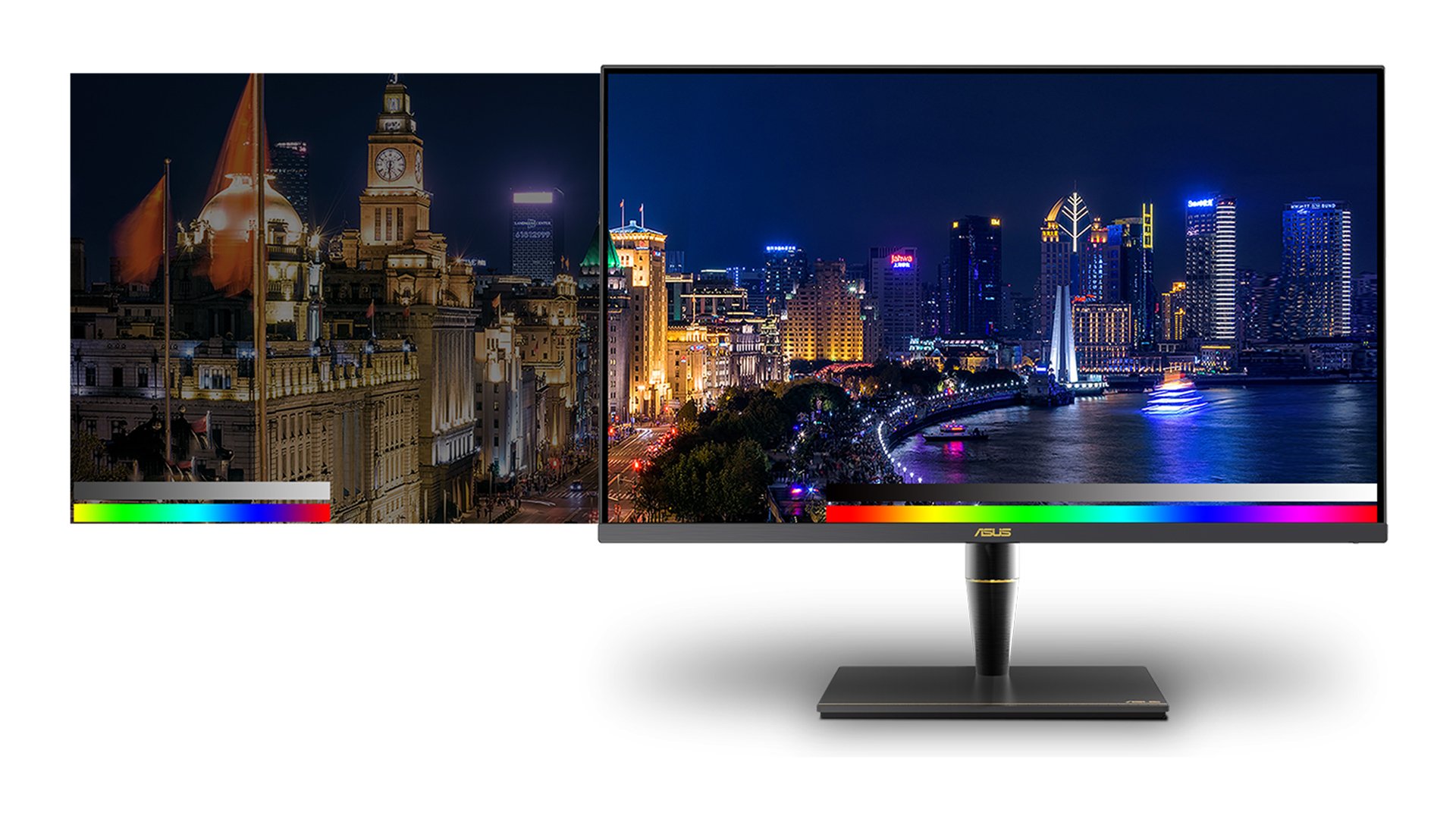
The talk of NAB this year might well have been focussed on the big players, so here are some of the things we think are just as important, but perhaps didn't get the coverage they deserved.
About 1600 companies exhibited at NAB 2019, and with almost 1300 people registered as press there were almost enough journalists around to permanently assign one of them to every booth on the show floor.
But because that doesn’t tend to happen, there are often things that get overlooked in preference for the bigger, showier releases. Let’s correct that today: some completely unofficial awards for interesting things that didn’t either didn’t get widely covered, or which deserve a bit more technical analysis than they generally get.
Craftiest Code
Before Blackmagic and Atomos announced their favourite compressed raw formats last year, there were already several camera-specific codecs in use. The concept of compressing Bayer data before it’s even been processed into RGB goes back at least to Cineform. This leads us to two conclusions: there are already way too many incompatible options, and the last thing we need is any more added to the mix.
However, developer IntoPIX has something that might make us reassess that conclusion. The codec, which the company calls TICO-RAW, is available not only as software for desktop computers, but also as IP cores for FPGAs and as design documentation for non-reprogrammable, custom-made integrated circuits (which tend to do the same work with lower power consumption.)
Things like ProRes have been implemented in many similar ways, of course, and what makes IntoPIX’s effort special is that it has been designed particularly for things like portable cameras. One aspect of this is that it works on just a single line of pixels at once. It uses a wavelet transform much like JPEG-2000, but instead of working on a block of pixels (often codecs use eight pixel square blocks) it considers only one row at a time.
We might expect this to reduce compression efficiency very slightly, since the codec can’t take advantage of the similarity between adjacent lines. However, what it also does is massively reduce the memory bandwidth required in the encoder. A codec considering eight pixel high blocks must store eight complete lines of image data, and retrieve it for processing piece by piece. Depending on the type of image, bit depth and so on, this will require a fair chunk of memory to store that slice of image, and talking to memory has an impact on power consumption. The results are, optionally, either very near lossless, or very efficient at rates down to around 10:1 on Bayer data up to 10K square.
It’s a new twist on a very old idea. The biggest problem is pretty clearly adoption: if nobody uses it, it may as well not exist, and it’s hard to see any one of the camera companies giving up their proprietary formats for this - no matter how good an idea it would be.
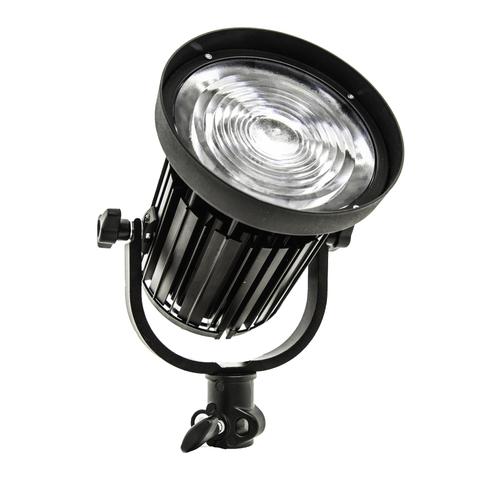
The BB&S Compact Beamlight
Finest Photons
Until recently, LED lighting for film and TV work almost always involved a blue LED illuminating a yellow-emitting phosphor. The combination would closely approximate white light, and it’s an approach that works well for almost all currently-deployed lighting.
The problem with this is that it is limited by the physics of fluorescent materials. They can shift the frequency of light from, say, blue to red, but they can’t go the other way; red can never become blue (doing so would violate the law of conservation of energy by converting a lower-energy photon into a higher-energy one.) It’s intrinsically a lossy process, and it means that no LED light can ever produce a deeper blue than the blue produced by its driver LEDs.
There have been LEDs which will emit ultraviolet light for a while, and that instinctively sounds like a solution because we could then take light that’s too blue for us to see and convert it to any other blue we liked. The problem is that UV-emitting LEDs have always been twitchy, thoroughbred technology; short-lived and temperamental and not suitable for deployment in movie lights.
So, to date, we’ve been stuck with LED lights that can’t really do deep blues. Often that isn’t a problem because the blues we’re talking about are really very, very deep, but it’s always been detectable in the fact that the R12 reference colour in the extended CRI test set is often not well illuminated by LED lights.
There’s one way in which this often becomes very obvious. LEDs which simulate colour filters sometimes list the extremely blue Rosco no. 382 gel, an epically deep and saturated cobalt colour named Congo Blue which lives in the extremely short wavelength range on the very edge of human vision. Very few colour mixing LEDs can actually match the real Congo Blue gel as it looks with an HMI light behind it because they simply don’t produce much light that colour.
BB&S’s Compact Beamlight CBL-1 is a white light emitting fresnel in the forty-watt range, and it produces a healthier blue output than many other options because it uses an ultra-deep blue emitting LED which has only recently become available. This means that most of its blue output is created by a blue-emitting phosphor, which produces a wider range of blue shades than the single spike of an LED. This means that colour rendering is smoother and more predictable, particularly in the difficult blue-turquoise range, and those super-deep blues are more available through conventional filtering. The difficult R12 patch is, finally, well-illuminated.
BB&S is not the only manufacturer to use this technology, but their uniformly excellent colour performance earns them a mention here - and we should also doff our caps to UPRTek for the CV600 colour meter used to make the measurements on which this discussion is based.
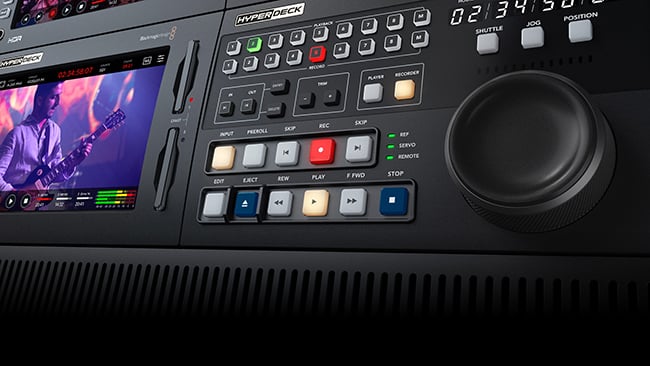
The Blackmagic Design Hyperdeck Extreme 8K
Best Buttons
Blackmagic’s enthusiastic strides towards 8K have been extensively covered elsewhere, not least on the small LED sign partway down the Las Vegas strip on which the company modestly announced its intentions.
Yes, that was at least for a time the single largest emissive LED display in the world, though it’s not clear whether it’s 8K wide or not.
Anyway, this is not about 8K in general - it’s about the delightfully retro design of the control panel made for the Hyperdeck Extreme 8K recorder. In reality, it’s not specific to the recorder; it’s a general-purpose 8-channel RS422 device controller speaking what’s often referred to as the Sony device control protocol, but which is widely understood by devices expecting RS422 control. There are eight discrete 9-pin outputs, each addressable for both recording and playback functionality.
Quite a few devices still speak RS422, even though they’re generally doing so as an emulation of an early-2000s tape deck. The last actual video tape format, HDCAM-SR, has been out of manufacture since Sony ended all half-inch, helical-scan video formats in 2016; the only remaining magnetic tape implementations are LTO and a couple of other obscure data tape formats which don’t operate as video tape devices anyway. RS422 controllers go for a song on eBay, and there’s a certain enthusiasm for them solely because of the ergonomic benefits of a big chunky jog-shuttle dial and long-travel pushbuttons.
And that, presumably, along with a hefty dose of nostalgia, is why Blackmagic have gone to incredible lengths to recreate the look and feel of a late-90s or early-2000s Sony tape deck (and yes, it looks very much like a Sony, down to the brushed-gold finish on the nameplate.) The company proudly boasts that it had to have the backlit buttons specially manufactured. Those buttons are fitted with warm-white LEDs to more accurately simulate the appearance of the tungsten incandescent indicators used in classic equipment. Yes, that makes the blue buttons look a little greenish and watery in colour, and yes, that’s what it should look like.
Perhaps the star of the show is the jog-shuttle dial, which includes an electromechanical clutch to create the proper feel when switching from jog to shuttle modes. The panel even has a servo light (servo? on a flash recorder?)
It’s not quite a perfect period recreation: the timecode display uses white LED 7-segment displays, while they should really be red or vacuum-fluorescent aqua, with all but the centre segment slightly faded from having sat on a zero count for long periods of time. The “servo” and nearby lights use modern indium gallium nitride LEDs of an emerald-green colour rather than the grass-green types of yesteryear, but otherwise, it almost looks like a recreation of a hypothetical product that never really existed.
Except it does exist, it is strange and wonderful, and it costs $1200. It’s almost worth buying as an objet d’art.
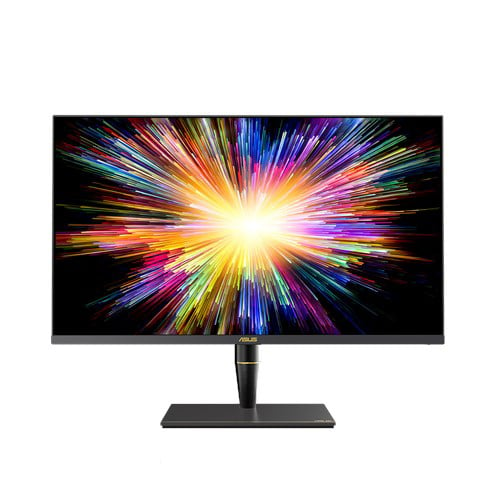
The Asus ProArt PA32UCX UHD display.
Least-costly contrast
Computer manufacturer Asus has not exhibited at NAB before, and as such ended up way down the back of South Hall, in the area reserved for small companies and new arrivals. That’s a bit of a shame, because one of the key realisations of NAB 2019 was that there are very few solutions for HDR that are both affordable and reliable.
Asus’s ProArt PA32UCX display offers UHD (not DCI 4K) resolution and 1200 nits of peak brightness. Yes, this means it must use a thousand-zoned backlight, and no, that isn’t really an ideal solution, but it is certainly the best practical solution that’s currently available. High brightness OLEDs as used in the Sony BVM-X300 are so horrifically expensive, difficult to manufacture and short-lived that the company has effectively thrown in the towel on the technology, and seems to be reaching for the dual-layer LCD technology such as that found in the BVM-HX310, which produces an effectively-indistinguishable picture and solves the premature ageing issue. It doesn’t solve the horrific-expense issue, though. Dual layer LCD panels are five figures as OEM components, let alone in a finished display.
It’s therefore significant that Asus expects the PA32UCX to retail for several thousand US dollars, rather than several tens of thousands of US dollars. 32 inch is a good size for circa-4K displays; any smaller, and worthwhile viewing distances end up feeling myopically close. No, it isn’t a BVM-HX310, and really it’s unfair to compare prices; yes, it will in some circumstances inevitably show glow around very sharp-edged, very bright objects, but it exists, and not much else does.
This is in no sense a review; not even a preview, really, based on a quick glance on a cruelly-remote part of a trade show floor, but this might turn out to be a key enabler for people looking to finish HDR on a budget. Breaking the thousand-nit barrier at this price and with this sort of overall contrast performance deserves more attention than Asus probably got, all the way back there in a remote zip code.
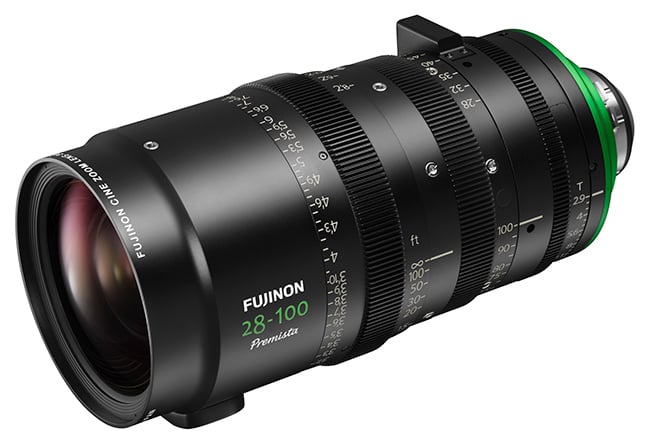
The Fujinon Premista 28-100 lens
Least-appreciated product category
With full frame cameras ballooning in popularity, it’s no surprise to find various manufacturers showing (or at least promoting) full-frame lens ranges. Canon’s Sumire primes have been widely discussed, but the Fujinon Premista zooms are at least as noteworthy, given how commonly the company’s existing zooms are used on upscale feature films. Sony showed Venice material shot with the Cooke full-frame anamorphics and Sigma added to its own cine prime range. Schneider and Zeiss have had full-frame cinema lenses for some time, having led the pack in terms of early availability.
All of these things are good and represent a lot of work. What represents even more work is something like the Canon UHD Digisuper 8.2x122mm broadcast lens. The level of sophistication and technological innovation in a lens like this is way, way, way in excess of anything found in all those much-vaunted cinema lenses. OK, they’re not directly comparable, but it’s not difficult to conclude that the difficulty of making of a 122:1 zoom of this sophistication is beyond any cinema lens.
For a start, there’s the challenge of landing a reasonable 4K image on a tiny 2/3” sensor. Or rather, a set of three tiny 2/3” sensors, with the usual concerns over ensuring the red, green and blue images all land in the right place. Doing that in HD is difficult; doing it in 4K is massively more difficult (it’s easier on a larger, single, super-35mm sensor.) Then there’s the need for an 8.2mm wide end on a lens with a rather long flange focal distance, plus of course the 122:1 zoom range.
This is a lens for sports or music concerts, capable of taking in an entire stadium at 4K resolution and immersing a viewer in the experience on a wall-sized 4K display, then next week showing the expression in just one eye of a violinist during a virtuoso performance. Yes, it ramps slightly in the last few percentage points of zoom range, but it can communicate with certain cameras in order to perform dynamic shading adjustments to offset the problem.
There’s also stabilisation. With the extender in (and yes, it has an extender too) the maximum focal length is 2000mm. At that sort of focal length on such a small effective sensor, even the tiniest instability in a crane or scaffold tower results in huge vibration in the image. It’s been quite normal for very long broadcast zooms to include some sort of image stabilisation for some time, but again, the rigours of such a long focal length, and 4K imaging to boot, serve to exacerbate all of these problems. The 122x lens (and its fractionally less capable stablemates) is the resut of a long period of kaizen, or gradual refinement, and it is a towering achievement.
It’s only fair to point out that all of this was made clear in a fascinating presentation delivered during a dinner party thrown by Canon at NAB, and that other manufacturers - principally Fujifilm - would doubtless be eager to discuss the similar sophistication of their competing options. The purpose here is not particularly to promote Canon or the 122x zoom in particular; it’s to emphasise once more that there are things outside of single-camera drama which deserve a lot more attention than they get.
Tags: Production


Comments